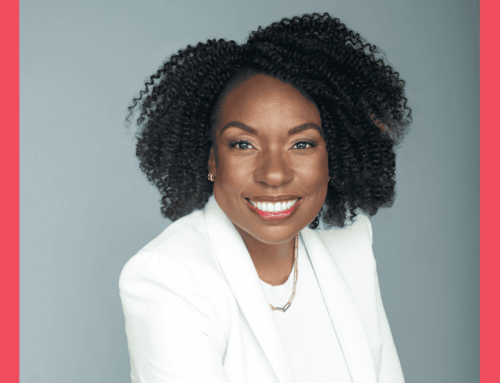Equal Pay Day is symbolic of how far into the next year the average woman works to have earned what the average man earned the previous year. In Canada, women make 88 cents for every dollar men make. But there’s more than one gender pay gap because those who face gender inequalities are a diverse population. Racialized women make 67 cents to the dollar for racialized men, Indigenous women make 65 cents to the dollar for Indigenous men, newcomer women make 71 cents to the dollar for newcomer men, and women with disabilities also have lower average incomes compared to men with disabilities.
We would be wise to think of it as gender pay gaps, plural.
Canada has had pay equity laws since the 1970s. But pay gaps and unfairness in pay persist. Girls face a summer job gender pay gap of almost $3.00 per hour. Women post-secondary students leave school with lesser means to pay off student loans. And the gendered pension gap means that women retire with about 80% of the pension men retire with.
Dr. Hadiya Roderique joins us to address gender pay gaps, their impacts on Black and equity-seeking women, how bias plays out in workplaces, what we need to do about it. Hadiya is a researcher, writer, speaker, consultant, and recovering Bay Street lawyer. She is currently an Assistant Professor of Journalism at the University of Toronto’s Scarborough campus, where her research focuses on racist discourse in how journalists write about race in Canadian media. She holds a J.D. and M.A. in Criminology from the University of Toronto, and completed her Ph.D. in Organizational Behaviour at the Rotman School of Management. She is an award-winning writer, probably best known for her piece Black on Bay Street, which set Corporate Canada ablaze, and earned her recognition as one of Canada’s Top 25 most influential lawyers by Canadian Lawyer’s magazine in 2018. She sits on the Board of the Women’s Legal Education and Action Fund and on the Equity Diversity and Inclusion committee of Ultimate Canada.
Relevant Links: Equal Pay Day and Gender Pay Gaps: Infographic
Transcript
00:00:02 Andrea
We talk about a gender pay gap in Canada, but did you know that there are gender pay gaps? Plural.
I’m Andrea Gunraj from the Canadian Women’s Foundation.
Welcome to Alright, Now What?, a podcast from the Canadian Women’s Foundation. We put an intersectional feminist lens on stories that make you wonder “Why is this still happening?” We explore systemic roots and strategies for change that will move us closer to the goal of gender justice.
The work of the Canadian Women’s Foundation and our partners takes place on traditional First Nations, Métis, and Inuit territories. We are grateful for the opportunity to meet and work on this land. However, we recognize that land acknowledgements are not enough. We need to pursue truth, reconciliation, decolonization, and allyship in an ongoing effort to make right with all our relations.
00:00:58 Andrea
Equal Payday in Ontario was marked on April 4th.
It’s symbolic of how far into the next year the average woman works to have earned what the average man earned in the previous year.
In Canada, women make $0.88 for every dollar men make. But there’s more than one gender pay gap, because those who face gender inequalities are a diverse population.
Racialized women make $0.87 to the dollar for racialized men. Indigenous women make $0.85 to the dollar for Indigenous men, newcomer women make $0.87 to the dollar for newcomer men and women with disabilities also have lower average incomes compared to men with disabilities.
We would be wise to think of it as gender pay gaps, plural.
Canada has had pay equity laws since the 1970s, but pay gaps and unfairness and pay still persist. They have huge lifetime impacts.
Girls face a summer job gender pay gap of almost $3 per hour. Women post-secondary students leave school with lesser means to pay off student loans. And the gendered pension gap means women retire with about 80% of the pension men retire with.
Hadiya Roderique joins us to address gender pay gaps, their impacts on Black and equity seeking women, how bias plays out in workplaces and what we need to do about it.
Hadiya is a writer, cultural critic, speaker, researcher, lawyer and consultant. Her work has appeared in The Walrus, Macleans, the Toronto Star, and more. She’s winner of the National Magazine award for the best short feature for Black in the Ivory. And she’s best known for Black on Bay St, a cover story for The Globe & Mail on her experiences in a Bay St. law firm. Hadiya’s consulting work focuses on workplace equity, diversity and inclusion. She is an assistant professor of journalism at the University of Toronto, Scarborough.
00:02:52 Hadiya
I am a lot of things. I wear a lot of hats- journalist, writer, professor, speaker, consultant, former dancer, singer. So, I’m currently an assistant professor of journalism and journalism practice at the University of Toronto, Scarborough campus, and my research centers around the use of sexist and racist discourses in the news, the impact of these discourses on readers and the work experiences of racialized journalists.
I’m the former host of Canadaland’s Commons. In 2021, I won the National Magazine Award for Best Short Feature for a piece I wrote called Black in the Ivory. I’m also a speaker and consultant who advises on DEI issues in the workplace, but I am probably best known for my piece Black on Bay St, which outlines my experiences as a young Black woman working in the primarily white Bay St environment. And these experiences inform a lot of the consulting work I do, the writing work I do, the volunteerism that I do as well.
I am incredibly competitive, I do not like losing and I also perform better with an audience. So, I am a Leo- sun,moon, all of the Leo. And in university when I was playing Ultimate Frisbee, my nickname was Showdog because I would perform better when people showed up to watch us on the sideline. All of a sudden it would be like TSN turning point, I would be diving and things in a way that I had not been doing before. So that was my nickname as a young Ultimate Frisbee player. And it’s something that continued throughout my career. I play better when I’m on a big stage and when people are watching. And I think I also carry that into other domains of my life as well.
And also I like to say the world’s best aunt. I have two twin nieces who are the joy in light of my lives. They are 14 months. There are no cuter humans on this planet than my nieces, and I will fight you if you try tell me different. But they said my name before they said Mama because it is easier to say DeeDee than Mama. Anytime, I call them twice a day, every day so now when my sister picks up the phone or someone calls on the phone and they say Deedee, because they think everybody on the phone is DeeDee.
00:05:19 Andrea
Tell us about the gender pay gap and gender pay gaps.
What’s behind them?
How does it impact people differently, like Black women and racialized women?
00:05:27 Hadiya
I mean, the pay gap will depend on what you measure.
Are you measuring hourly wages?
Are you measuring annual wages?
What are you controlling for, for example, that women are more likely to be employed part-time?
But regardless of what you do, there is a significant pay gap for racialized groups, as compared to white individuals. Some recent Stats Can data shows that Indigenous women face a 57% pay gap, immigrant women 39% pay gap, for women with disabilities 46% pay gap, racialized women 32% pay gap.
The gender pay gap is everywhere but it targets women, sort of different racial categories, in different ways.
And the reason it affects Black women in a different way than it affects white women is because of intersectionality, which recognizes the interconnected nature of different social categorizations of race, class, gender, etcetera, creating overlapping and interdependent systems of discrimination or advantage.
It recognizes that some of our identity markers of women, Black, do not exist independently of each other. I am treated differently in the workplace than my Black male counterparts, and so Black women face this double jeopardy both of race and gender.
To me, this really comes down to both the devaluation of women’s work and the devaluation of Black people’s work.
At its core, this is about talent and who we perceive as talented, who we perceive as competent.
You know, looking back at gender, let’s take race out of it for a moment- women are 58% of university grads in Canada, and I’ll pick on my own former profession of the law. So, law school graduation rates have been the gender binary, women and men 50/50 for about 25 years. What do we see at the top of any large law firm in Canada, it’s certainly not 50/50.
If they’re doing well, maybe at 70/30, if they’re not doing so well, maybe 80/20, 90/10.
And so for us to believe that that makes any sense would mean that you think that men are smarter than women.
I can tell you the placing women 3 through 5 with men 6 through 8 is going to be a talent downgrade right? Women outperform men in university. We actually outnumber men typically on the Dean’s list 2 to 1.
For anyone to believe that the partnership and C suites and judiciary represent the best of who we have in our country would mean that using talent and intelligence are unequally distributed amongst genders and amongst races. Somehow you would have to believe that men get some sort of magical injection of talent around age 25, 26, 27 that us women don’t get.
And then when we put race back into that equation, I heard Trevor Noah say something quite insightful when he was on The Daily Show: Black people are looking for equality, not charity.
Not asking people to hire Black people or pay Black people, just because they’re Black. We’re asking companies to stop not hiring Black people, to stop not paying Black people, just because they’re Black, because that’s actually what’s happening.
There’s a few patterns that drive it, and I want to talk about two in particular.
So there’s the prove it again bias. And then there’s a tight rope of behaviors.
Prove it again bias is where groups that are stereotyped as less competent often have to prove themselves over and over and over. They’re not given the same benefits of doubts and or hand waving and saying oh don’t, just learning, it’s no big deal. They make a mistake and it’s held against them. You hear things like, oh, he’ll crush it versus she’s not ready for two people who have the same level of preparation. Prove it again groups are judged on performance, others are judged on this mythical potential, which is usually you look like me and I’m good so therefore you must be good.
You hear things like oh, he’s very talented versus oh, you know, she got lucky or, you know, someone makes a mistake, oh, that could happen to anyone versus oh, you know, she really blew it. So that’s where you have prove it again groups’ mistakes tending to be noticed more, remembered longer, whereas majority men’s mistakes tend to be written off.
There’s a professor named Lauren Rivera at Northwestern University. She sat in on a bunch of consulting and banking interviews, which usually involves some sort of math component, and she found that whenever a man made a math mistake, white man.
Oh, that was just a rounding error. Oh, he just missed a zero. All that’s like, not a big deal.
But anytime a woman or a person of color made that same math mistake, it was often used as a thing that held them from getting to the second round.
There’s also the tight rope of behavior, and this is where a narrower range of workplace behavior is often accepted from women and people of color.
So is someone a leader or are they a worker bee? Because if you’re in a tightrope group, the expectation is you face this pressure to put your head down, not rock the boat and get your work done and be undemanding and work hard. But then if you comply, you somehow now lack this mythical, leadership potential that you are supposed to demonstrate.
Or in who gets the office work and the glamour work? So people in tight rope groups often report less access to career enhancing opportunity and a lot more office housework. Shiny new case-do you give it to the person who looks like you or do you give it to the Black woman? More often than not, it’s given to the person that looks like you.
00:11:03 Andrea
Let’s pause here, Hadiya’s insight around the prove it again bias and tightrope of behavior illustrates how gender pay gaps aren’t just a matter of equal pay for equal work.
Equal pay for equal work is the easy conversation.
You don’t hear many people arguing that workers doing the same jobs shouldn’t be compensated in the same ways, but gender pay gaps are more complicated.
They happen not only because of discrimination, but also because women’s work tends to get undervalued and under protected.
And women are expected to do a lot of work for free, like childcare and elder care.
Gender pay gaps are also related to an array of opportunity gaps that come from all kinds of stereotypes and biases that are intended, unintended and an uncomfortable mix of the two, we don’t often talk about.
00:11:56 Hadiya
And I remember having a partner when I was giving a talk, he said, well, you know, if I’ve given this to this young man and he’s done a good job and another one comes up, I want to, you know, go back to him. And I say, what happens if he leaves tomorrow and you haven’t given that opportunity to anyone else. And also, how do you know she won’t do a better job? And then thirdly, why did you go to him first?
Got really awkward after that.
We all know the answer. They went to the person that made them more comfortable.
A lot of these patterns are driving these differences we see in the workplace, including in the pay that people receive.
00:12:33 Andrea
What can we do individually to deal with gender pay and opportunity gaps?
And what do workplaces need to do structurally?
00:12:40 Hadiya
When I was a junior lawyer, I intentionally chose the oldest, whitest guy to be my mentor. Those are the power brokers and so I wanted to be aligned with the person who’s going to be doing at work, who could see me doing good work. They’re not going to come to you independently unless there is a formal mentorship or sponsorship program.
Being creative and finding ways to get in front of the people who do have power to get them to see that you are competent and qualified and a lot of the time that takes you know initiative. So I remember when I was at my firm they had partnered us by gender in terms of our summer student offices. And I noticed this phenomenon happening where if a young man was working with a senior partner, the senior partner would take that young man out to lunch and he would also take his office mate, who was another young man.
I asked them to have more mixed gendered offices. And then I also just led up to that same partner because I was interested in getting to know what he did and said, can I take you out for lunch? It ended up being free lunch for me. But I had to go and put myself in front of him because he wasn’t going to see me as easily otherwise.
In terms of what workplaces can do, I would say a four step process.
So the first step is to understand the magnitude of this problem.
This means data. This means numbers. This means not assuming that you have good workplace or bad workplace when it comes to these issues, but actually digging into it, you know, where do women start to drop off? Where do women of color start to drop off? What is driving those things- is that after third year, is it after fifth years and after 10 years is after you will make it to level 2 in management or you make it to level one in management?
Have you done a pay equity audit of your workplace? You know, and not just on salaries, but on bonuses and discretionary payments. How do wages differ between groups who work in similar or same jobs?
Then secondly, is understanding the barriers, understanding the behaviors and the attitudes.
So think of it as like an iceberg. The behaviors are on top, but the attitudes driving the behaviors are the like a huge part of ice below and if you just try and change the behaviors without changing the attitudes, all you’re going to get are new biased behaviors.
And so thinking about what has stopped people in the past. So one example I like to give to people is I tell them about Jamal versus Charles’s resume. Exact resume, Jamal or Greg, Greg gets 50% more callbacks than Jamal. You know, we’ve known this for 20 years, this research came out I think in 2002. And I would ask people if you know heard about this or are you not surprised by it?
Keep their hands up. If their company did anything about this in the hiring process and almost every single hand would come down.
This is not new information. Why isn’t anybody doing anything with it or doing anything about it?
And I think there’s this real element of fear. A woman at a law firm wants directly connected to hiring. And I’m asking you, why don’t you use standardized interview questions? This didn’t seem to me, seems like a pretty basic thing to do. And she responded, we don’t think the students would like it. This is a firm that would get almost 1000 applications for 15 summer law students spots. But they were afraid people wouldn’t apply to them. And so I said, OK, you say, looking for a more diverse candidates, why would you want the people who would be afraid of a standardized question. You say you want diverse candidates. Have you ever considered that they would be more likely to apply to you if they saw that you standardized questions and found that your process is more fair? You know, someone being afraid of a standardized question is an excellent whittling tool for you. It gets rid of people who are not willing to have a fair process. They want special treatment. The fear had gone unchecked. No one was examining-is the fear actually based in any reality?
A lot of people are afraid that equity is somehow going to cost them.
Do you actually lose if black people are treated more fairly by the police? What do you lose? I don’t think you lose anything. And in fact, there’s a lot of research that shows that community-based policing leads to safer communities. When you actually treat people with more respect and kindness, your community is safer.
You’ve probably heard that quote 100 times: when you’re used to privilege, equality feels like oppression.
I’m OK with some people losing because they’re the people who should never have had it in the first place.
I’m OK with men 6 through 8, no longer having those opportunities because those are mediocre men who don’t deserve them. And men of quality don’t fear equality. Because they know it’s not coming for them. When, if we go to 50/50, the top 50% of men are fine.
Step three would be interrupting bias. So, once you understand the behaviors and attitudes and the barriers and you understand the magnitude of the problem and you know where your pain points are, maybe do a really great job of hiring and you have a really diverse entering class but things start to drop off around middle management. Where can we interrupt that bias that is happening?
So when it comes to pay, you know, encouraging pay transparency, I believe there was one organization where when they published their pay data by department, by race, the next year all of those pay gaps disappeared. When you were put on blast, you realize what reason do I have for being with people differently? And some people are recognizing that some people will be unfairly underpaid.
Demanding transparency laws for pay. I believe that the recent requirement that Canada instituted for public sector salary disclosures decreased the gender pay gap in universities from 15% to 4% and led to a lot more female professors getting more raises.
Information is power. Like once you find out that Chad, who does not have the master’s degree that you do and has three years less experience, is being paid more than you, you can go and demand that increase. And so I would encourage people who do fall into what we might categorize as more privileged positions to be very open about what you are getting paid.
Clarity in their job postings, making sure they have salary ranges, knowing that when women negotiate, they are treated less fairly than when men negotiate. And so that can help to reduce what’s called that ask gap, which will put women and racialized women at a disadvantage in wage negotiations.
And then supporting Black women at work- there was a recent Mackenzie Women at Work survey were 77% of people who signed considering themselves allies at work. But when you ask them to identify the consistent allyship actions they took, those numbers are much lower, so the member who advocated for new opportunities for women of color was only 21%, giving credit to women of color for their ideas in their work 43% , so mainly one near the 77% that they were claiming. And the number one most important action for women of color is to advocate for new opportunities for women of color.
They are competent.
They don’t need you to boost their competence.
They need you to give them the places so they can shine and show that competence.
Once you’ve instituted your bias interrupters, if they don’t work, then you have to see what’s happening at the end, are they working?
Have your number shifted? You would never run an ad campaign. Just be like, oh, we did it and not check to see if it had any impact on your sales. And the same thing applies here, so if it didn’t work you have to target a different area, try a new interrupter, but this is a constant iterative process.
00:20:35 Andrea
Alright, now what?
Learn more about gender pay gaps by going to canadianwomen.org. We’ve got a fact sheet about it, and we just published an infographic with updated statistics for you to share.
If you’re in Ontario, check out the Ontario Equal Pay Coalition at equalpaycoalition.org. They have great resources, materials and online petitions to get active on.
Please listen, subscribe, rate and review this podcast. If you appreciate this content, please consider becoming a monthly donor to the Canadian Women’s Foundation. People like you will make the goal of gender justice a reality, visit canadianwomen.org to give today and thank you for your tireless support.





